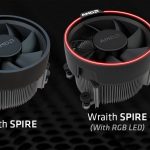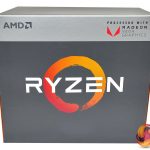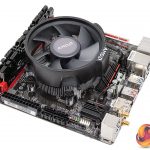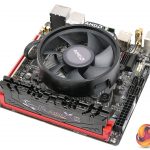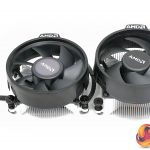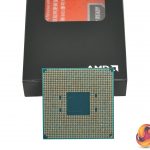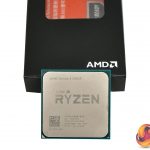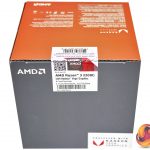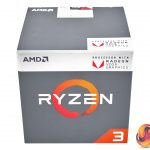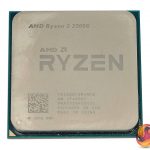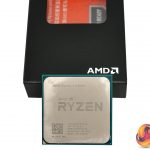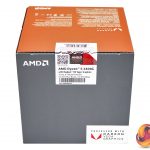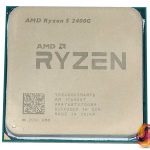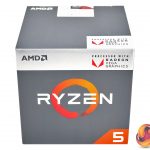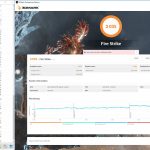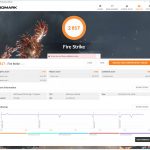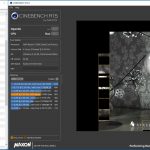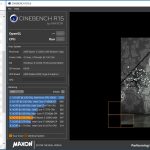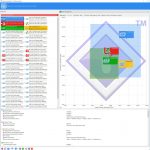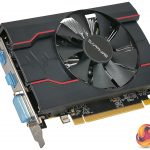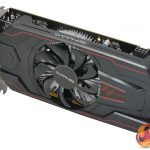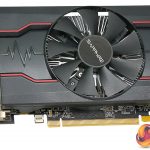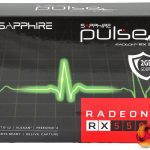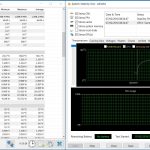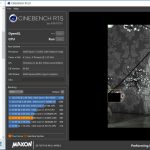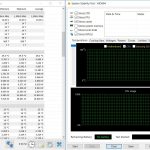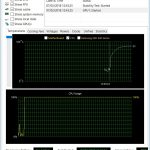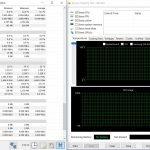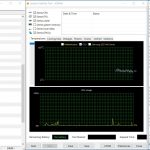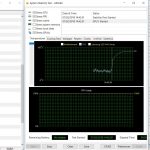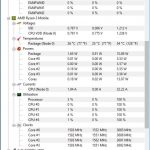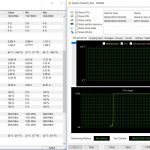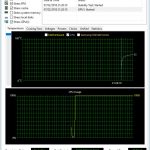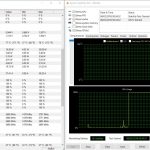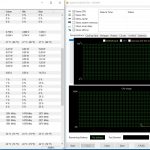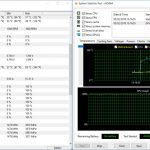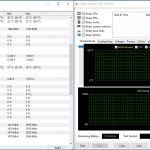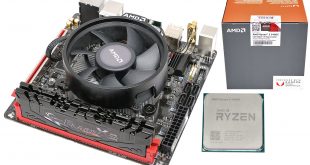
AMD has launched two new APUs (Accelerated Processing Unit) that marry Zen CPU architecture with Vega graphics. AMD Ryzen 5 2400G contains a Vega 11 graphics core with 11 Compute Units (hence the model code) and 704 Shaders. AMD Ryzen 3 2200G is the junior partner with Vega 8 graphics and 512 Shaders.
The especially clever part is that AMD has managed to package these two pieces of hardware inside a processor that uses the same AM4 socket we saw with Ryzens 7, 5 and 3 so these new Raven Ridge APUs are fully compatible with a huge stack of motherboards that are already on the market. All you need is a BIOS update and you’re ready for action.
AMD builds its Ryzen, Threadripper and EPYC CPUs from modules of processing power called CCX. Each CCX has four cores that may have SMT enabled to give two threads per core and each Ryzen has two CCXs to provide PCI Express support and DDR4 memory control. Both of the APUs have all four processor cores in a single CCX, unlike quad core Ryzens 5 and 3 that use a 2+2 configuration.
The downside of 4+0 versus 2+2 is that the new Raven Ridge 5 only has 8x lanes of PCI Express 3.0 instead of 16x and a reduction in L3 cache from 8MB to 4MB, compared to other quad core Ryzen 5 CPUs. It is worth noting that AMD says the revised CPU package now uses ‘a traditional non-metallic TIM’ so we shall have to see what impact that has long term, however in the first instance we did not notice any problems with the change.
With the CPU cores packaged in a single CCX, AMD has the other half of the AM4 package free for the graphics core. The fact they are able to connect a Zen CCX to a Vega graphics core shows the flexibility of the Infinity Fabric interconnect. On the downside, the Raven Ridge APU has to use DDR4 system memory both for the PC and also to power the graphics. As you will see in our video the 2400MHz default speed of our G.Skill FlareX memory throttled performance. Enabling XMP so the memory ran at 3200MHz helped matters greatly and it is clear that 3600MHz or 4000MHz memory would be even better.
Both APUs have a rated TDP of 65W and come packaged with a Wraith Stealth cooler that stands less than 60mm above the PCB of the motherboard. That’s about 10mm lower than the Wraith Spire you receive with a retail Ryzen 5 CPU. The other notable difference is that Stealth is all aluminium while Spire has a copper slug in the centre to aid heat dissipation. The combination of a low TDP and low profile cooler means you should be able to install Raven Ridge in a small form factor chassis, which ties in with the thinking behind the Gigabyte AB350N-Gaming-WiFi motherboard we received in the AMD press kit.
Throughout our testing we used the Stealth cooler and did not use the Spire or an all-in-one liquid cooler. There were two mains reasons; first we didn’t have any problems with overheating, although Stealth was pushed to its limits by the synthetic AIDA64 stress test. Also, we expect Raven Ridge customers will be working to a tight budget so it seems logical to use the supplied cooler unless there is an overwhelming reason to change.
There are two differences between Ryzen 5 2400G and Ryzen 3 2200G. The first is that Ryzen 3 2200G is quad-core without SMT while Ryzen 5 2400G has SMT and is quad-core with eight threads. The other major difference is that Ryzen 5 2400G has the more beefy Vega 11 graphics core with more Shaders that run at a higher clock speed ‘up to’ 1250MHz while Vega 8 is clocked ‘up to’ 1100MHz. Although AMD says ‘up to’ we found the graphics cores were rock solid at those speeds and did not throttle.
The Ryzen 5 2400G has a base clock speed of 3.6GHz and maximum boost frequency of 3.9GHz, however all cores run at 3.75GHz which is slightly faster than the Ryzen 5 1500X we used for comparison. Ryzen 3 2200G has the same base and boost speeds of 3.5GHz and 3.7GHz that we saw with Ryzen 3 1300X, with all cores running at 3.6GHz. This emphasises the point that Ryzen 3 2200G is a regular Ryzen 3 with the addition of a Vega graphics core while Ryzen 5 2400G required some reworking to repackage the cores into a single CCX.
As we discuss in our video, you are currently obliged to use AMD Ryzen Master v1.2 software to adjust speeds and voltages for the Vega graphics cores. This has a significant overhead when it is running that we described in the video as 25 percent of CPU load. That isn’t quite correct as my mental maths was at fault while I was talking to camera, however the worst case we saw with Ryzen 3 2200G was a drop in Cinebench score from 560 to 460 which is 18 percent.
Ryzen 5 2400G also saw a 100 point drop from 765 marks to 691 marks which is the same ten percent overhead that we have seen with Ryzen 7. This is terrible and highlights the fact that Ryzen Master should be used as little as possible. Make any necessary changes with Ryzen Master and apply them, restart the PC if necessary and then shut Ryzen Master down.
We tested both APUs with the supplied Gigabyte AB350N-Gaming-WiFi and a second motherboard of the same model when the first locked solid and refused to restart. AMD supplied a dual channel kit of G.Skill FlareX DDR4-3200MHz and we used a Sea Sonic Prime Titanium 600W Fanless power supply.
We compared the Vega graphics with two graphics cards from Sapphire. The Pulse Radeon RX 550 2GB has 640 Shaders (Polaris technology) at a maximum speed of 1071MHz so on paper it appears to fall somewhere between Vega 8 and Vega 11.
Sapphire Pulse RX 560 Pulse 4GB has 1024 Shaders (Polaris technology) and a core speed of 1300MHz that should be a clear upgrade for ether APU.
3DMark
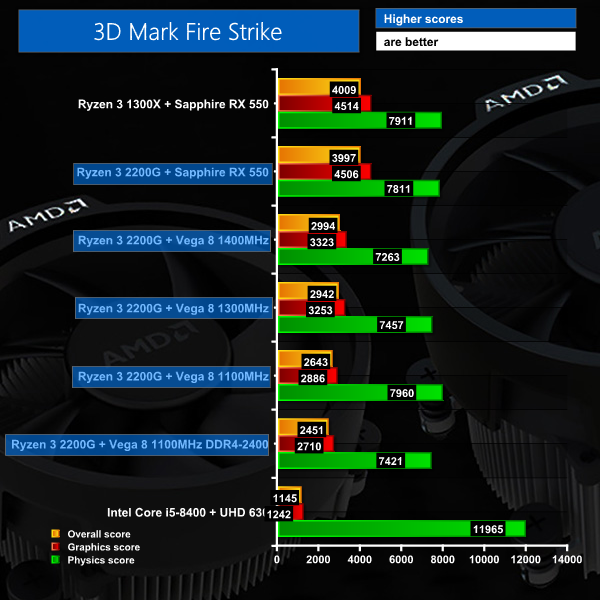
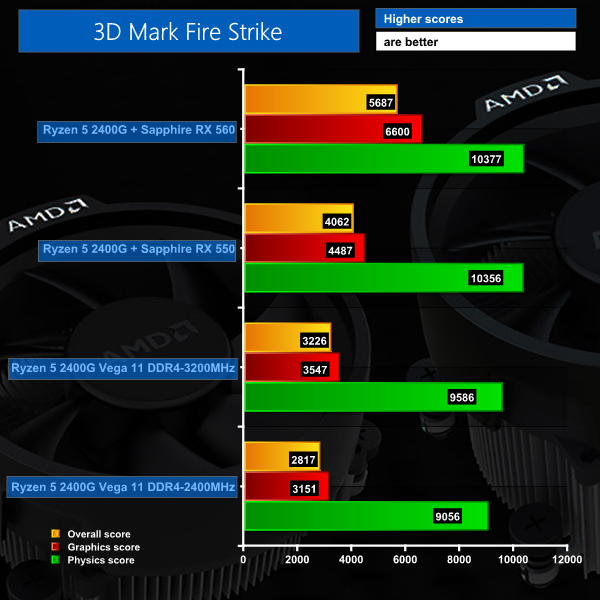
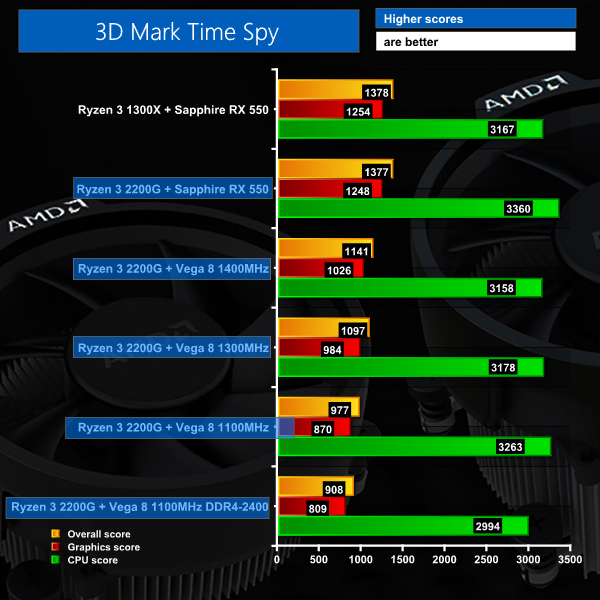
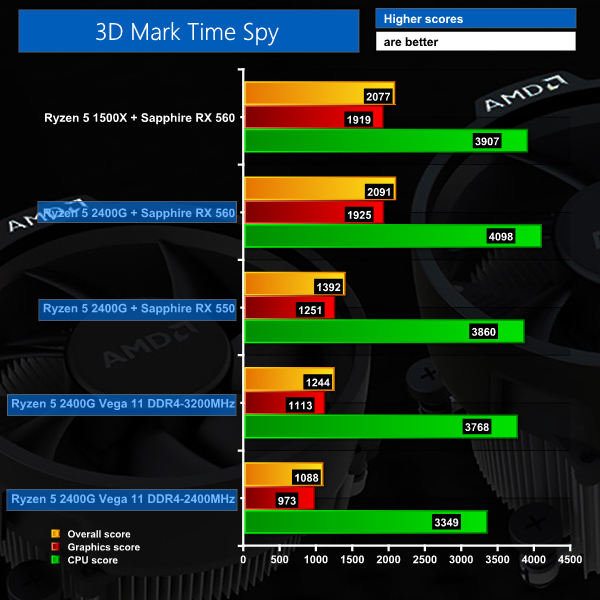
Rocket League
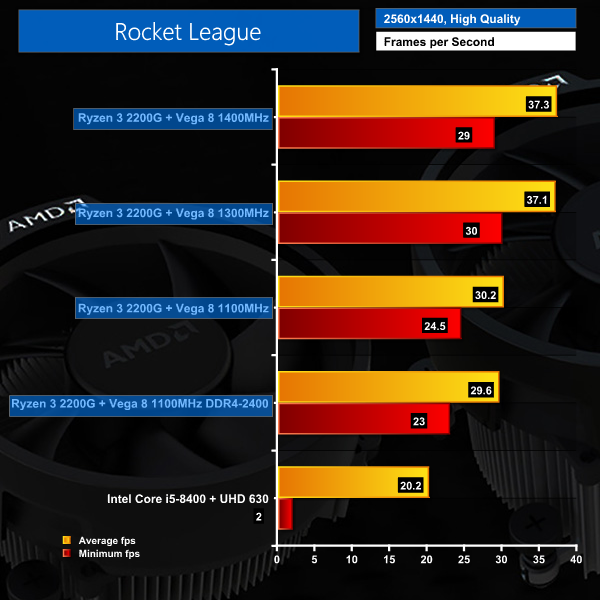
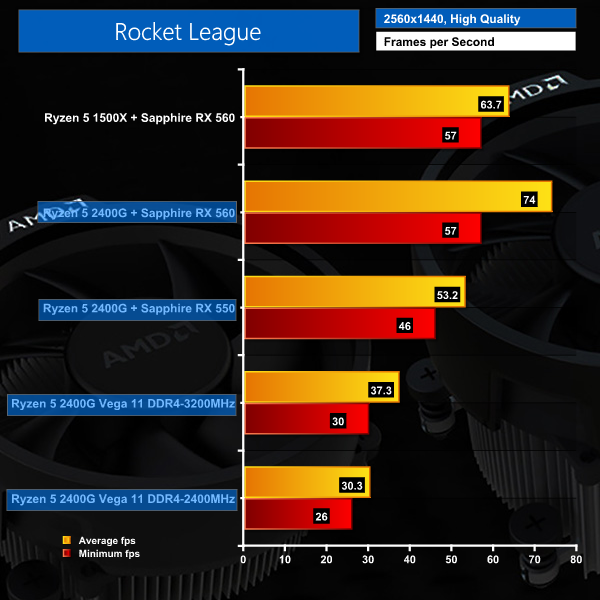
World of Warcraft
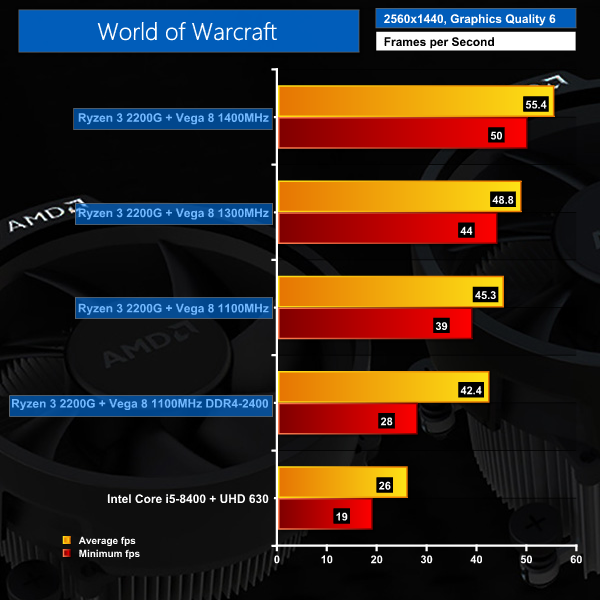
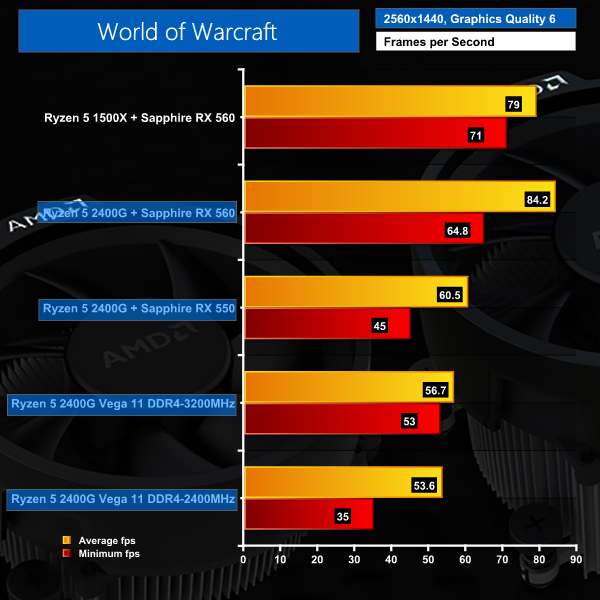
Rise of the Tomb Raider
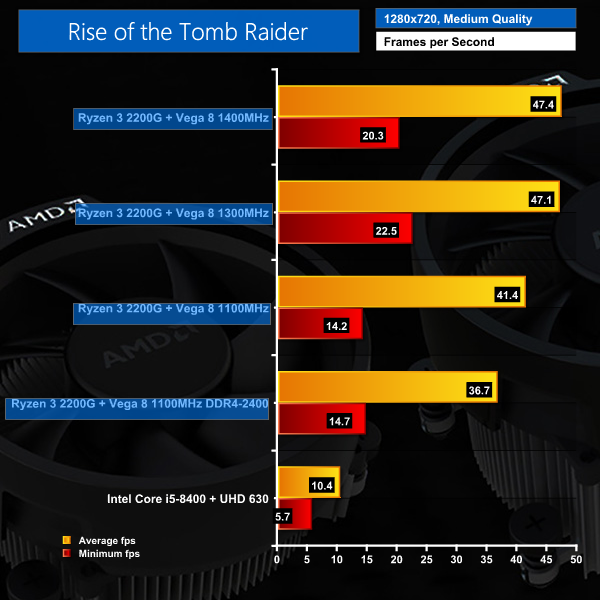
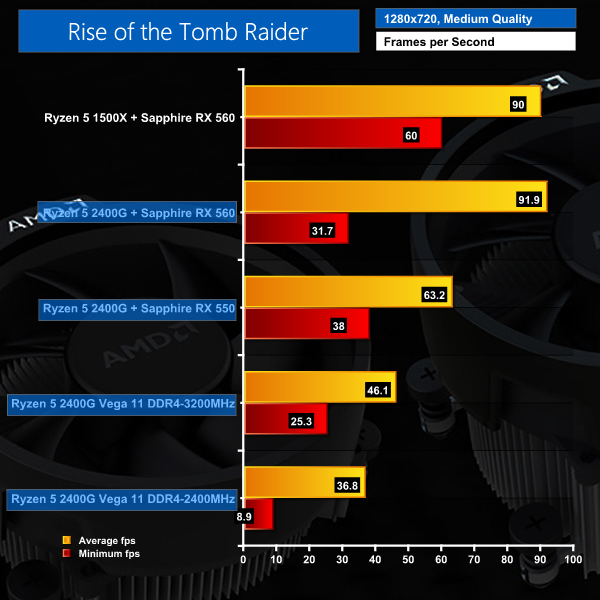
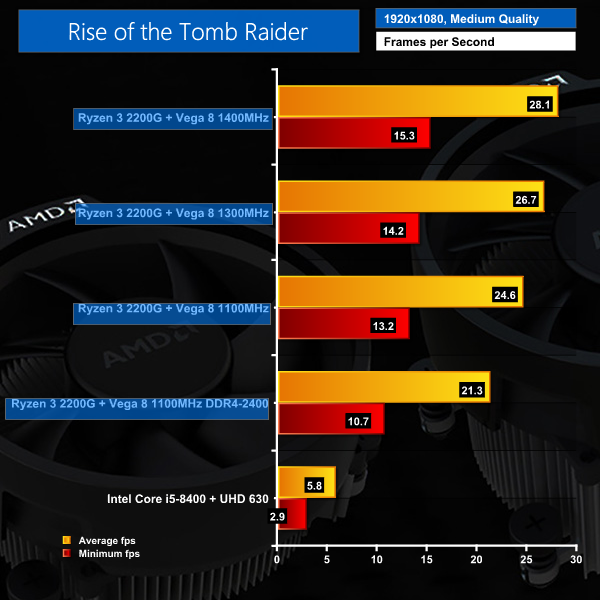
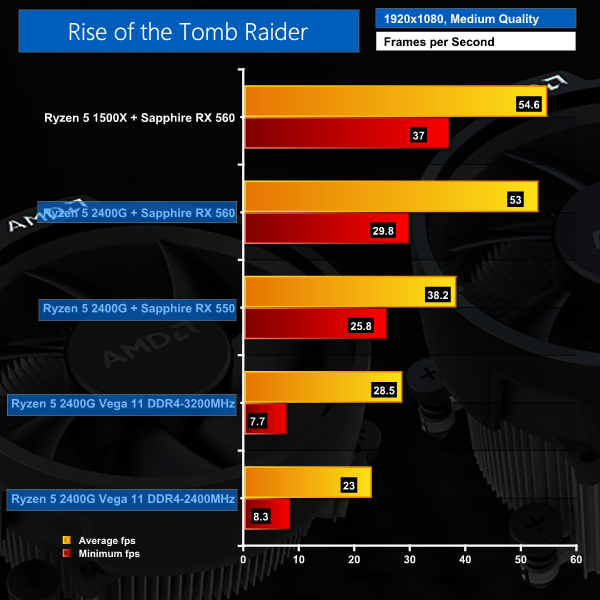
Ashes of the Singularity: Escalation
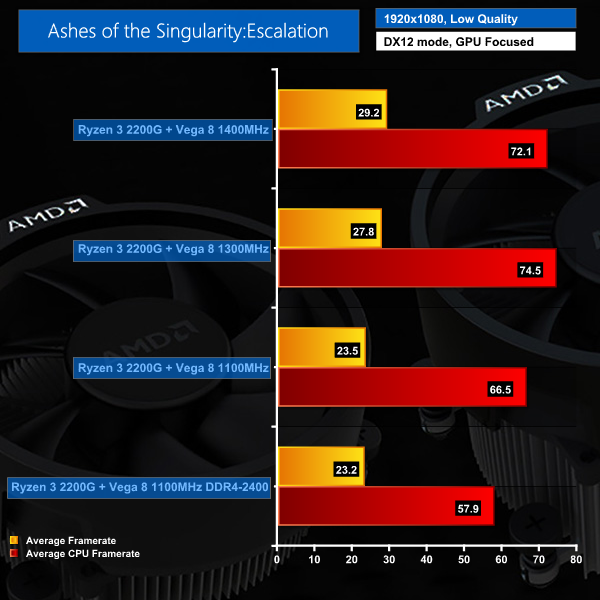
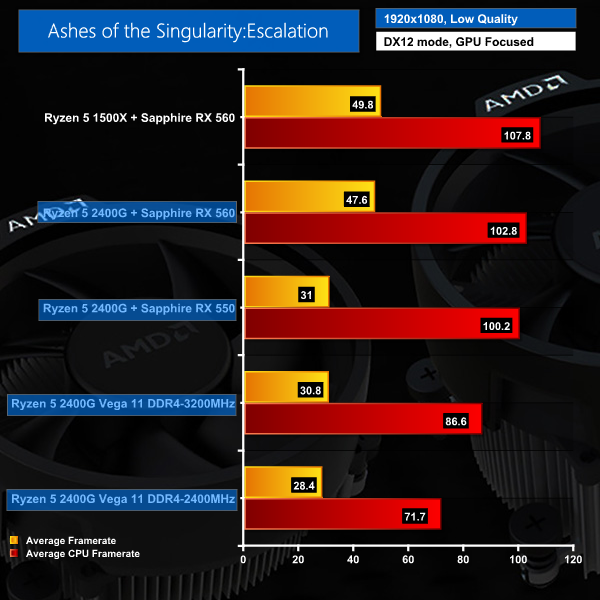
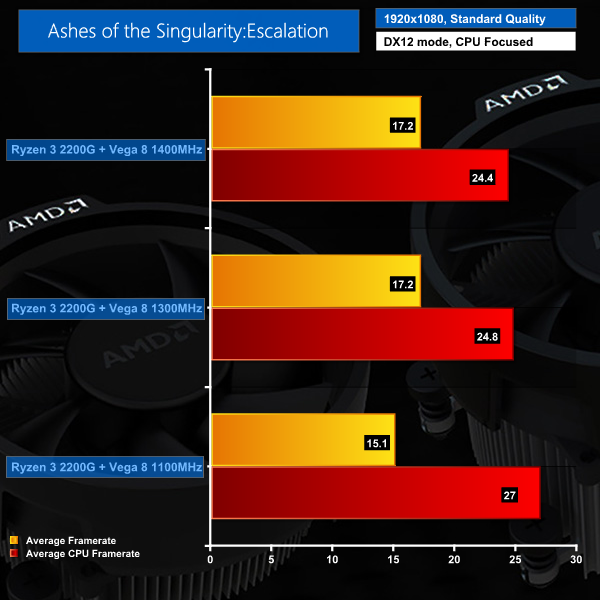
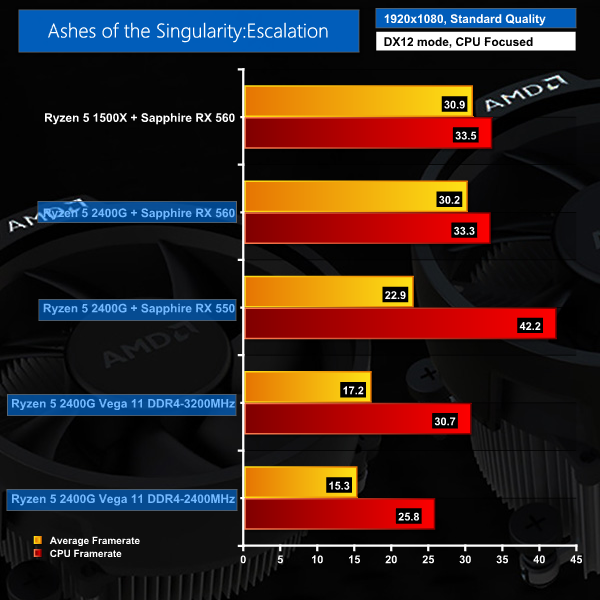
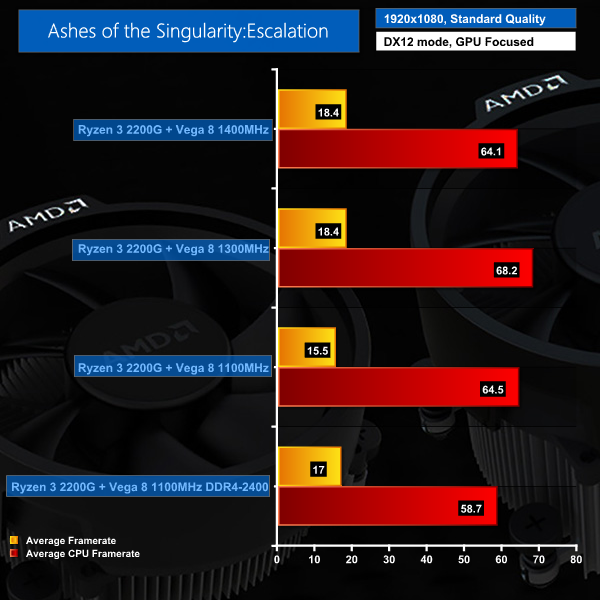
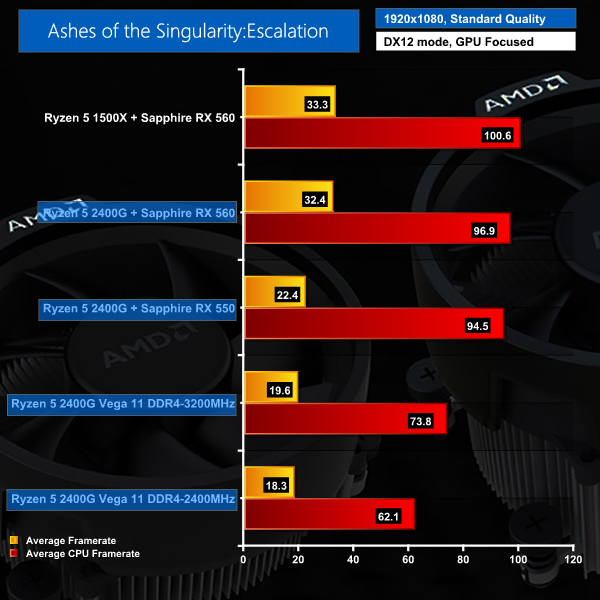
Blender

Cinebench R15
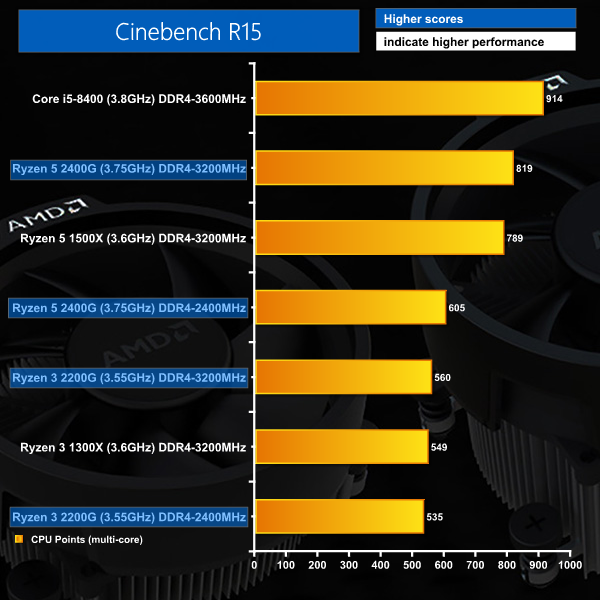
SiSoft Sandra
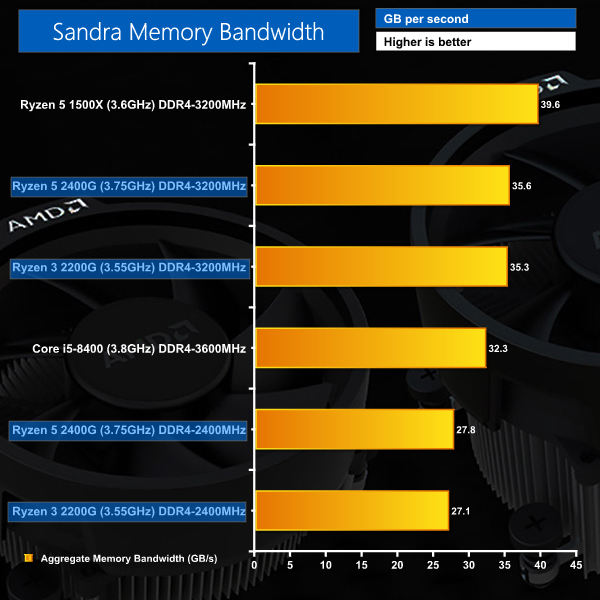
Testing Overview
You can adjust the UMA size for graphics memory in the Gigabyte BIOS with a current maximum of 2GB, although we are told future BIOS releases will support 4GB and 8GB. We found the best strategy was to leave the UMA setting on Auto as there were times when 2GB gave a benefit and others when it was a hindrance.
We were impressed by the Vega 8 and 11 graphics cores in these APUs, however the new technology offered no direct benefit over Polaris in terms of performance. Having said that, while we are used to Vega 56 and 64 demanding massive levels of power and producing excessive levels of heat, it seems clear that Vega 8 and 11 are running at the correct clock speeds for this technology in this application, The result is that AMD has been able to shoehorn a serious graphics core into a tiny package and the results are impressive.
Overclocking Overview
AMD was clear that Raven Ridge benefits from overclocking of the CPU, GPU and memory. While this is of technical interest we struggle to believe that many APU customers will engage in serious levels of overclocking, beyond enabling XMP for extra memory speed.
Our notes say:
- Go in small steps beyond default clock (1250 for 2400G and 1100 for 2200G). GPU clock adjusts in 20MHz steps up to 1500 and 25MHz after that.
- Keep SOC VID around default (1.10V). When GPU goes to OC Mode it will run at SOC voltage rail level (by default it uses a voltage level that is internally regulated from SOC but runs at lower level. Below 1.00V). If you adjust SOC while GPU is in OC Mode you also increase the GPU voltage.
- There is also an item called GFX VID which can be set higher than SOC voltage. GFX Voltage setting kicks in only in 3D Mode (and will boost SOC voltage at the same time).
- Once you exit 3D the voltage level drops to the SOC voltage level.
These notes were a starting point but we did find that Vega 8 was happy to run at 1400MHz on stock voltage while Vega 11 crashed repeatedly in Time Spy once we overclocked by more than 50Mhz. That was despite raising Ryzen 5 2400G SOC from 1.10V to 1.15V and APU GFX from 1.10V to 1.25V.
You can overclock either CPU core to 3.9GHz and we found 3.8GHz did not hurt thermals however the benchmark results suggested stock clock speeds was the best approach.
In the end we used Ryzen 3 2200G with the Vega 8 graphics core at 1400MHz and left the clock speeds of Ryzen 5 2400G untouched.
Power and Heat
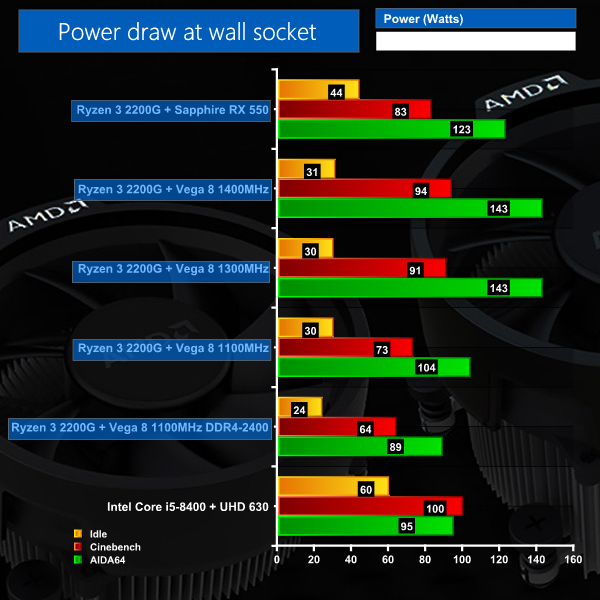
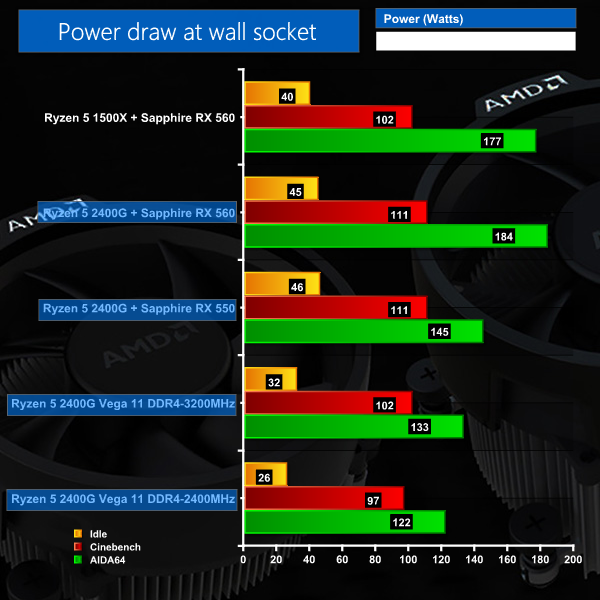
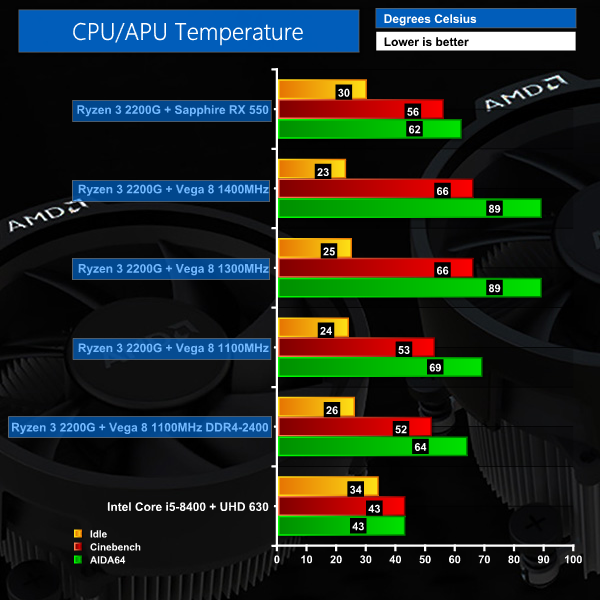
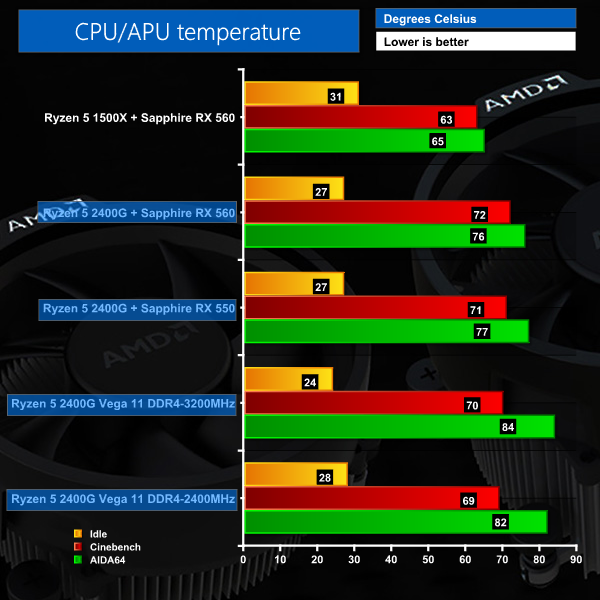
Power and Heat Overview
At stock clock speeds you will find the new Raven Ridge APUs are amazingly tame. Typical temperatures are around 70 degrees C, although Ryzen 3 2200G stepped up noticeably when we overclocked the graphics core.
Power draw at the wall socket can be as low as 100W under full load which is pretty remarkable. When you overclock the Memory, CPU or graphics you can see the power draw increase at every stage, however the worst case scenario using the integrated Vega graphics was less than 150W which is still amazingly low.The fact that AMD has added a Vega graphics core to a quad-core Ryzen CPU while retaining the AMD package is impressive. This is a very simple way to swap the CPU in a PC to an APU. Conversely if you buy a new Raven Ridge PC in 2018 you will be able to upgrade the CPU and/or add a PCI Express graphics card at a later date. The options are almost endless and the flexibility of the AM4 platform is exemplary.
While you have the options for endless mixing and matching of hardware we imagine most customers of Ryzen 3 2200G will be impressed by the small form factor, lower power and negligible levels of heat. In return you get a competent PC that can play casual games such as World of Warcraft and Rocket League. If you indulge in overclocking you will raise your levels of performance by a noticeable amount, however you have some very hard limits on AAA game play and will need to settle for 1280×720 resolution.
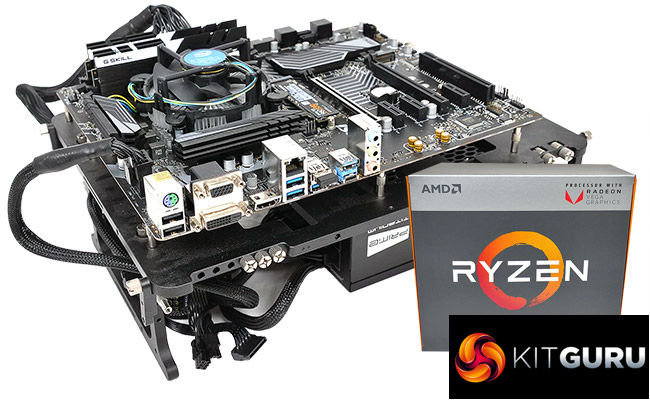
Ryzen 5 2400G lets you push slightly further and can entertain the notion of 1920×1080 gaming but the fact we could not overclock the graphics is a significant factor. If updates to the BIOS, Ryzen Master or the graphics drivers makes this easier, then it clearly increases the appeal of the more powerful APU. As things stand Ryzen 5 gives you SMT and extra CPU threads but does not unlock much in the way of extra graphics performance, and that means the extra cost is a big black mark.
It makes more sense to buy the Ryzen 3 2200G at US$99 – rather than the Ryzen 5 2400G at US$169 – and then start saving for a Sapphire RX 550 at £130 or better yet an RX 560 at £160. Ultimately, if you are balancing price and performance the new Ryzen 3 2200G is an absolute diamond.
We are happy to concede that any gamer who wants performance at any cost, or who demands 4K gaming, will simply pass on Raven Ridge and these APUs. That’s fine, they’re not meant for you anyway but there is a huge potential market of PC users who have never experienced proper graphics and they ought to grab Raven Ridge with both hands.
We don't yet have confirmed UK pricing, but US MSRPs are as follows: Ryzen 3 2200G – $99. Ryzen 5 2400G – $169.
Discuss on our Facebook page HERE.
Pros:
- Same AM4 socket as every Ryzen CPU means there are heaps of motherboards on the market.
- Ryzen 3 2200G is only priced at US$99
- DirectX 12 gaming performance from integrated graphics
- Graphics driver support is surprisingly good.
- Vega 8 graphics core easily overclocked to 1400MHz
- Ryzen 5 2400G is a better CPU than Ryzen 5 1500X
- Ryzen 3 2200G APU is cheaper than Ryzen 3 1300X and comes with a graphics core
Cons:
- Raven Ridge demands high DDR4 speeds
- Ryzen Master software has a high CPU overhead
- We could not overclock Vega 11
- Ryzen 5 2400G is too expensive compared to Ryzen 3 2200G
KitGuru says: AMD Ryzen 3 2200G delivers new levels of performance at this low price point.
Be sure to check out our sponsors store EKWB here
 KitGuru KitGuru.net – Tech News | Hardware News | Hardware Reviews | IOS | Mobile | Gaming | Graphics Cards
KitGuru KitGuru.net – Tech News | Hardware News | Hardware Reviews | IOS | Mobile | Gaming | Graphics Cards


